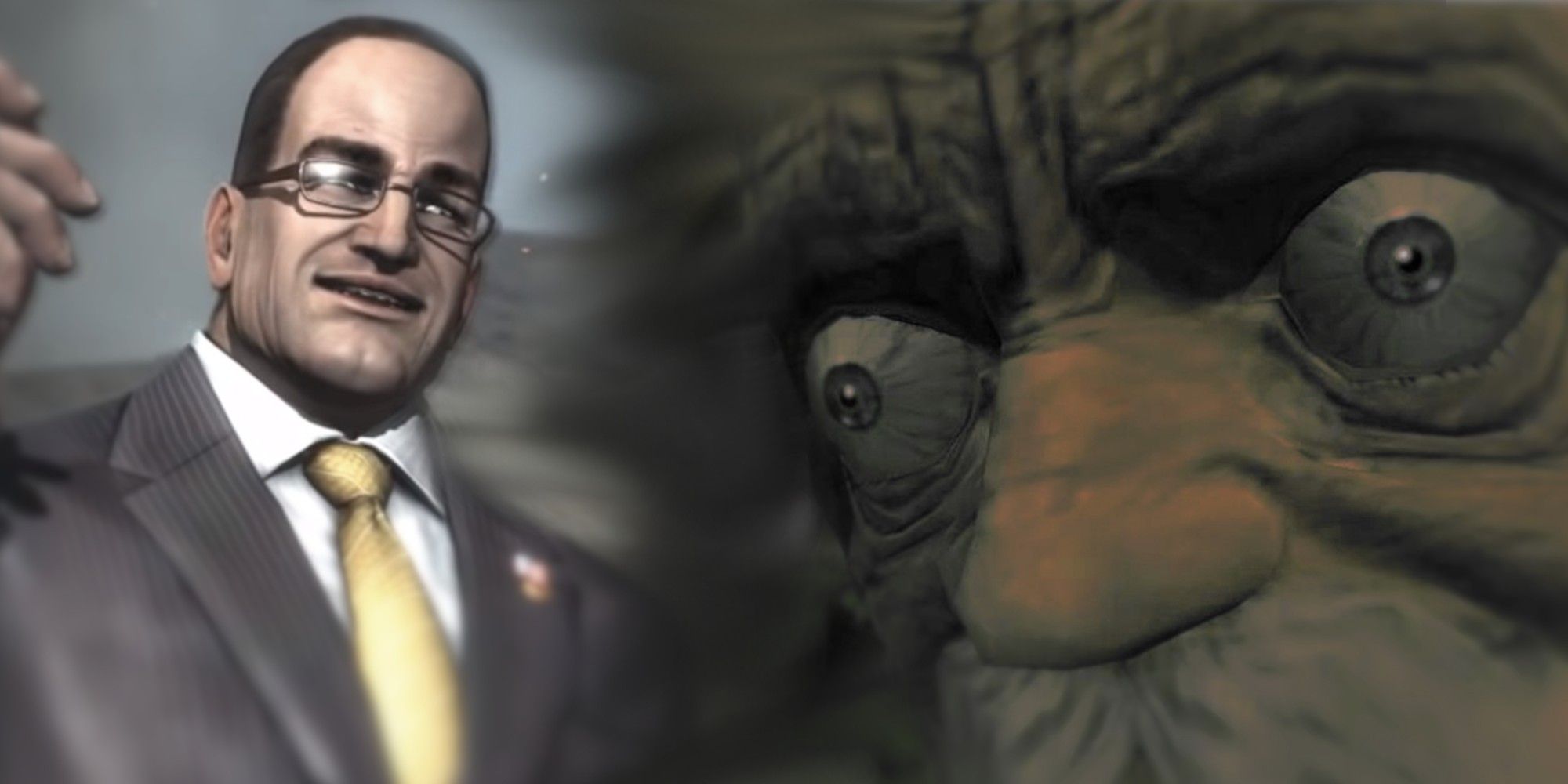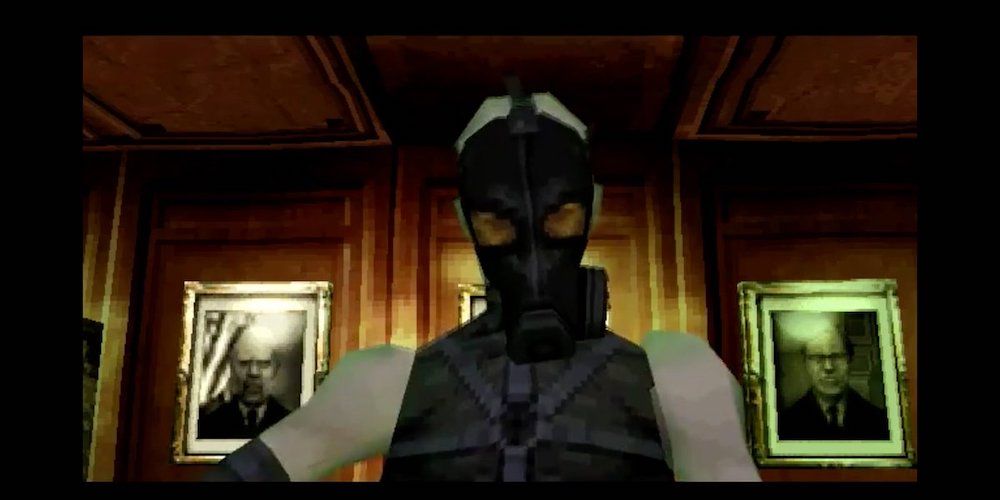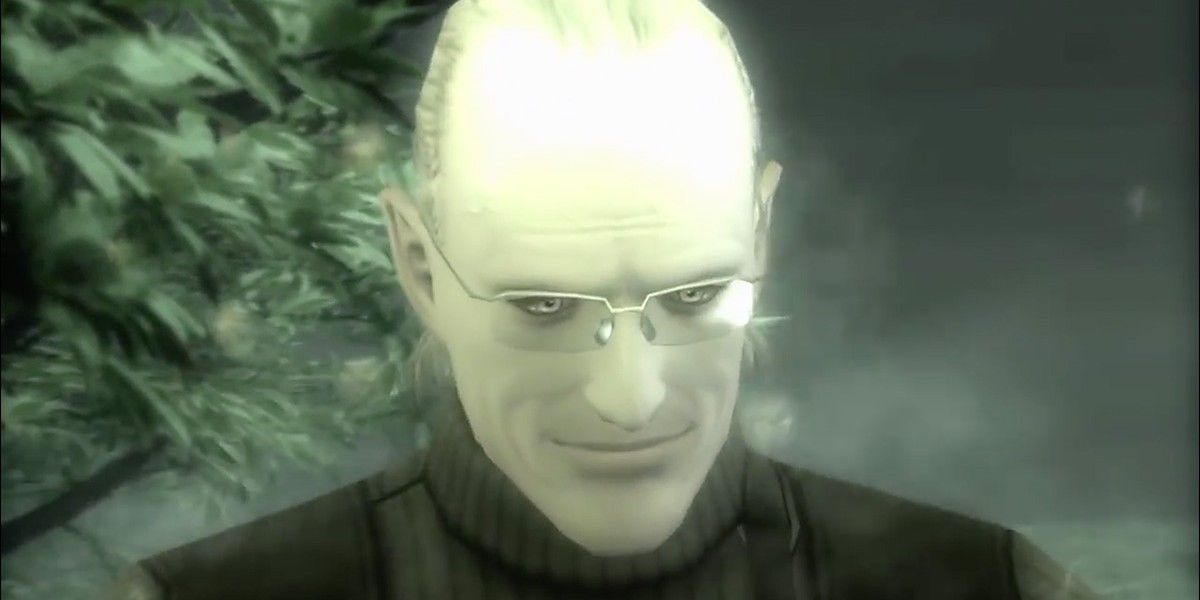The Metal Gear series is famous for its movie-length cutscenes, high-octane action, graphical advancements and excellent voice acting. Yet it is also known for strange supernatural and sci-fi weirdness that lend itself well to the strange personalities of the enemies that stand in the path of Big Boss, Solid Snake, or Raiden.
Metal Gear's boss fights are rightfully praised for their creativity, fun gameplay and adding characterization to what would otherwise be simple obstacles. But these are among some strange ones with unorthodox set-ups or solutions -- and they're the most memorable because of it.
Psycho Mantis
The first bizarre boss fight that fans think of when to Metal Gear Solid is the fight against Psycho Mantis. He is infamous for his ability to read minds -- that is to say, break the fourth wall via reciting save files and reading the player's button inputs. Mantis' telekinetic abilities are so great that not only can he levitate, control people like puppets and psychically throw objects around the room from a distance, he can also move the player's controller via vibration.
One of the few ways to beat him is to find a way to prevent Mantis from reading Snake's movements. The best way to do this is for the player to physically stand up, go towards the PlayStation and move the controller to the second player's socket -- an out-of-the-box way of playing a video game, especially in 1998. After this, the fight against Mantis is simple, as he can no longer read the player's inputs and dodge Snake's attacks.
The End
Metal Gear Solid 3 is often considered the magnum opus of the series and one of the greatest games ever made, bringing next-gen graphics to the PlayStation 2 and adding realistic interactivity the world of Naked Snake, the future Big Boss. It also serves as an evolution of the Metal Gear series' famous boss fights, providing exponentially crazier solutions to equally insane enemies with supernatural abilities.
Known as the "father of modern sniping," the plant-like Cobra Unit sniper known as The End challenges Snake to a grand sniper duel that encompasses multiple maps. The player must pay close attention to their surroundings, stealthily avoiding The End's incredible senses while simultaneously trying to locate his well-camouflaged silhouette in the forestry. However, in addition to using traditional sniping methods or sneaking up on him, there's another, less conventional way to approach this battle: increase the timer on the PS2 by a week, and wait for him to die of old age.
The Sorrow
Metal Gear Solid 3 was so innovative in its storytelling that simply mentioning one boss fight wouldn't give this masterpiece enough credit. Few games actively punish or call out players for murdering enemies left and right throughout their adventure. But MG3 players would face the consequences of their actions late in the game when Snake faces Cobra Unit member, The Sorrow. Snake finds that the Sorrow is a ghost -- he's already dead, and his health bar is empty.
There is no way to fight the Sorrow, and the player's only option is to trudge forward through the river of the dead, which is more or less difficult depending on how many enemies the player has killed. All slain enemies, including bosses, will are represented by ghosts, who slowly drain Snake's health. The only way to come out of this encounter alive is to open up the item menu and use the revival pill -- yet another out-of-the-box solution for an unorthodox boss.
Liquid Ocelot
Metal Gear Solid 4 is the ultimate swan song for series protagonist Solid Snake, with callbacks and references to characters and moments from previous entries of the series. As a book-end to Old Snake's final adventure, he engages his longtime nemesis Liquid Ocelot in a violent fist-fight atop a small platform, akin to the final fight against Liquid Snake in the first Metal Gear Solid. The wildest part about this battle isn't necessarily the gameplay itself, but rather the presentation surrounding it.
The music, health bars and fighting styles of both Snake and Liquid change over time, matching that of a particular game in the series. The first phase replicates Metal Gear Solid 1's interface and "Encounter" music, the second phase plays Metal Gear Solid 2's "Tanker Incident" and the third plays "Snake Eater" from Metal Gear Solid 3. The emotional moments come from cutscenes, the pain both characters feel when fighting and Liquid slowly turning back into Ocelot, reflected by the name listed in his health bar.
Senator Armstrong
As a complete tonal and gameplay shift from previous Metal Gear titles, Metal Gear Rising: Revengeance is a hack-and-slash action game starring MGS2 protagonist Raiden, and as such has equally over-the-top boss fights to match. While the game features wild moments such as judo-throwing a Metal Gear RAY and fighting a cyborg that dismembers himself, perhaps the craziest moment is the final battle.
After revealing himself as the perpetrator behind the game's events, U.S. Senator Steven Armstrong battles Raiden in a gigantic experimental Metal Gear called Metal Gear Excellus, which is appropriately epic for a final boss on its own. But afterwards, it is revealed that Armstrong isn't merely a normal man, as nanomachines have given him superhuman strength and durability that prove more than a match for Raiden. The fight against Armstrong is climactic and brutal to be sure, but his extremely hammy dialogue and over-the-top behavior cements him as one of the strangest and most memorable bosses in the entire series, if only for how unexpected his is.






